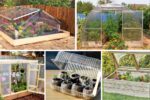In our fast-paced, modern world, many people dream of having a beautiful, relaxing outdoor space but feel overwhelmed by the idea of endless weeding, watering, and upkeep. The good news is you can enjoy a lush, inviting garden without dedicating countless hours to its care. The secret lies in creating a low-maintenance garden — a thoughtfully planned space that minimizes labor while maximizing aesthetic appeal and ecological value.
In this comprehensive guide, we’ll explain how you can build a low-maintenance garden by selecting the right plants, using smart landscaping techniques, and incorporating time-saving garden practices. Whether you’re a beginner, a busy professional, or simply want to reduce yard work, this article will show you how to achieve a beautiful, stress-free outdoor retreat.
What Is a Low-Maintenance Garden?
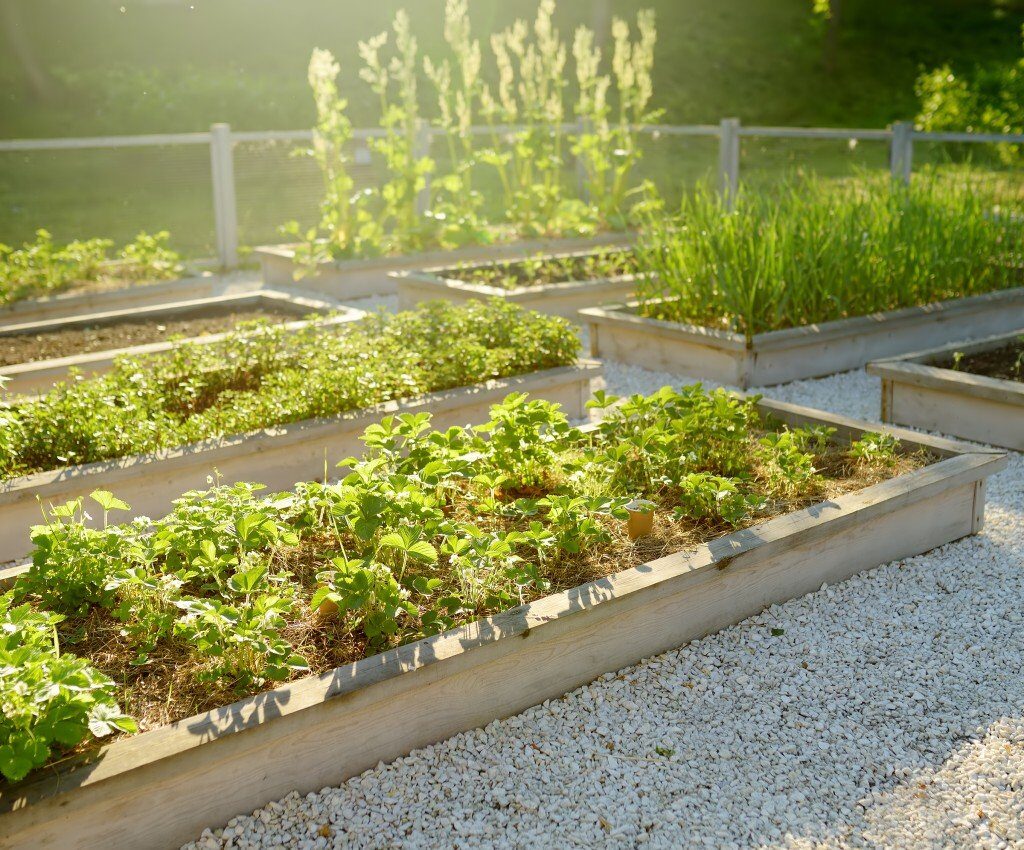
A low-maintenance garden is designed to be self-sustaining, easy to care for, and visually appealing year-round. It requires minimal intervention in terms of watering, pruning, weeding, fertilizing, and pest control. By choosing resilient plants, simplifying the layout, and using smart gardening techniques, you can cut down on upkeep without sacrificing charm or variety.
Benefits of a Low-Maintenance Garden
Creating a low-maintenance garden offers numerous advantages:
- Saves time and labor in daily care routines.
- Reduces water consumption, especially important in drought-prone areas.
- Minimizes the need for chemical fertilizers and pesticides.
- Supports wildlife and pollinator-friendly habitats.
- Provides a relaxing, visually attractive outdoor space year-round.
Key Elements for Building a Low-Maintenance Garden
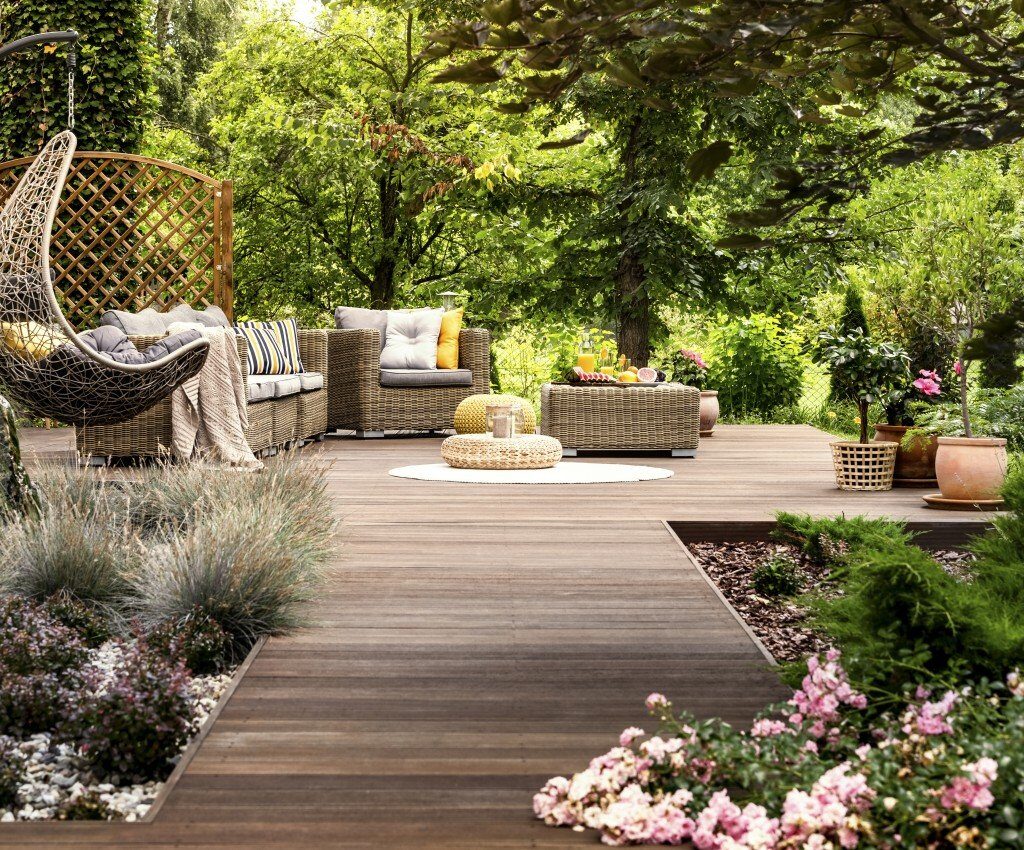
1. Smart Garden Planning and Design
A successful low-maintenance garden begins with a well-thought-out plan. Consider the following:
- Simplify the layout with clean, open spaces and a clear structure.
- Limit the number of plant varieties to make care more manageable.
- Designate specific areas for trees, shrubs, perennial beds, and seating.
- Use hardscaping elements like gravel paths, stone patios, and raised beds to reduce the amount of turf and planting areas that require regular care.
Tip:
Choose curves over sharp angles in paths and borders to create a natural, flowing look while simplifying maintenance.
2. Choose Drought-Tolerant and Low-Care Plants
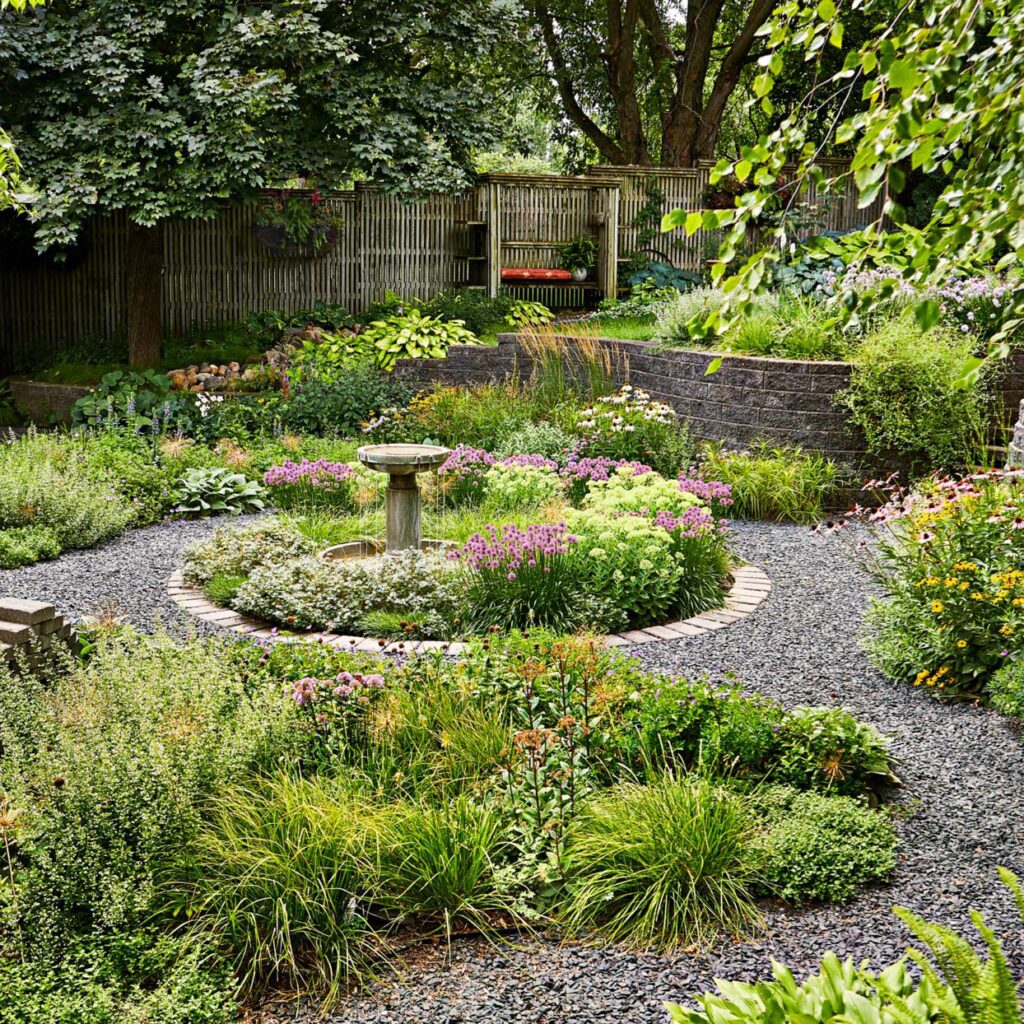
Plant selection is crucial in reducing maintenance tasks. Opt for species that are:
- Native to your region (naturally adapted to local soil and weather).
- Drought-tolerant and pest-resistant.
- Slow-growing or naturally compact in form.
Excellent Choices Include:
- Lavender
- Sedum
- Coneflower (Echinacea)
- Agave
- Salvia
- Boxwood
- Ornamental grasses (like Fountain Grass and Feather Reed Grass)
Perennials are preferable over annuals since they return each year, reducing the need for replanting.
3. Reduce Lawn Size
Lawns are often the highest-maintenance part of a garden, requiring frequent mowing, watering, fertilizing, and pest control. Reduce lawn areas by:
- Expanding garden beds.
- Adding patios, decks, or gravel seating areas.
- Using ground covers like creeping thyme, clover, or sedum that require less care than traditional turf grass.
4. Use Mulch Generously
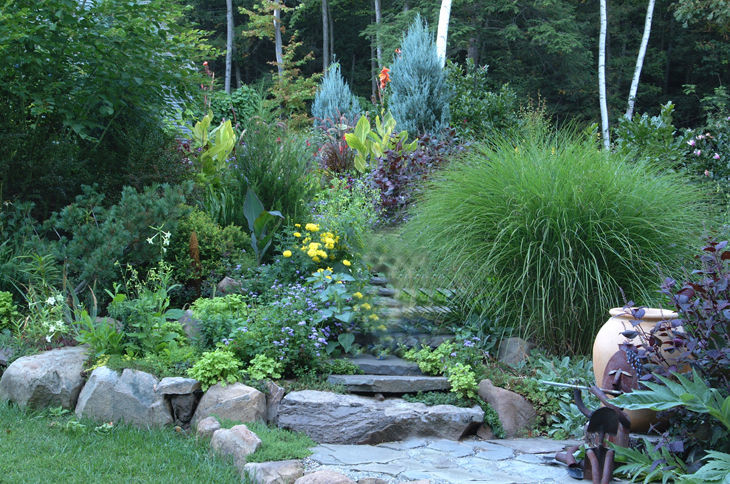
Mulching is one of the easiest and most effective ways to cut down on weeding and watering. A 2–4 inch layer of organic mulch (like bark chips, shredded leaves, or straw) around plants helps:
- Retain soil moisture.
- Suppress weeds.
- Improve soil fertility as it decomposes.
- Regulate soil temperature.
Tip:
Keep mulch a few inches away from plant stems and tree trunks to prevent rot.
5. Install Drip Irrigation or Soaker Hoses
Watering by hand or using sprinklers can be time-consuming and inefficient. Installing a drip irrigation system or soaker hoses delivers water directly to plant roots, reducing evaporation and ensuring plants get consistent moisture.
Benefits Include:
- Saves water and time.
- Prevents overwatering and plant diseases from wet foliage.
- Can be automated with timers for worry-free care.
6. Select Perennials and Evergreen Shrubs
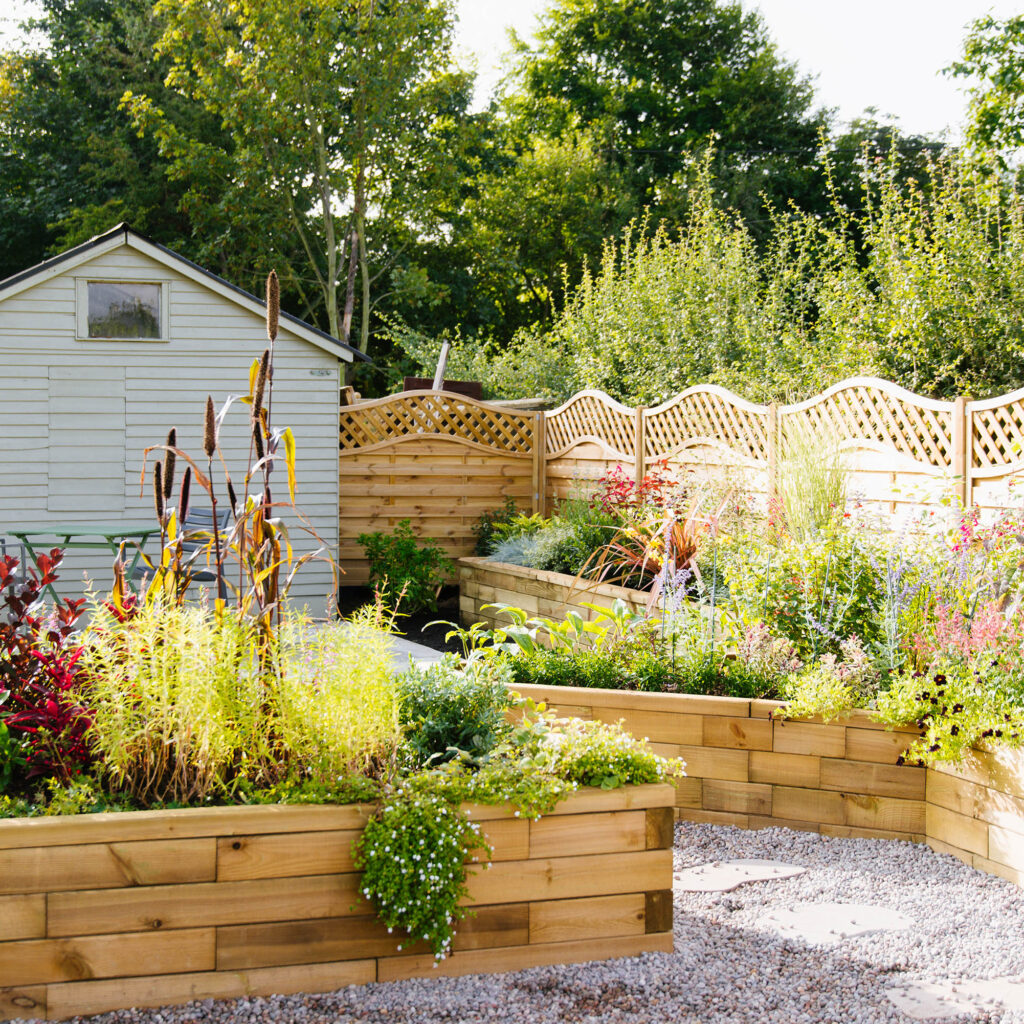
Perennials and evergreen shrubs offer structure, color, and foliage throughout the year with minimal maintenance.
Reliable Options:
- Daylilies
- Hostas
- Russian Sage
- Butterfly Bush
- Hydrangeas
- Boxwood
- Junipers
Once established, these plants require little beyond occasional pruning and seasonal care.
7. Use Container Gardens Wisely
Container gardens are excellent for adding color and variety without committing to large planting beds. Choose self-watering containers or group pots together for easier watering.
Low-Maintenance Container Plants:
- Succulents
- Geraniums
- Petunias
- Herbs like rosemary, thyme, and oregano
Tip:
Avoid small pots that dry out quickly and require frequent watering.
8. Incorporate Hardscaping
Hardscaping elements reduce maintenance by limiting planting areas and adding functional, decorative features. Ideas include:
- Gravel or stone pathways.
- Patios and decks.
- Garden benches and sculptures.
- Decorative boulders and dry riverbeds.
These features require little to no care and provide visual interest year-round.
9. Practice “Right Plant, Right Place” Gardening
Planting species suited to their preferred light, soil, and moisture conditions reduces stress on plants and minimizes the need for intervention.
Examples:
- Sun-loving plants like Lavender and Sedum for south-facing beds.
- Shade-tolerant plants like Hostas and Ferns for north-facing or sheltered spots.
- Drought-tolerant species for slopes and exposed areas.
10. Adopt Naturalistic Planting Styles
Formal, manicured gardens demand constant upkeep. In contrast, naturalistic planting styles embrace the beauty of slightly untamed, layered plantings where plants are allowed to intermingle.
Benefits:
- Lower maintenance.
- Greater biodiversity.
- Natural resistance to pests and diseases.
Combine tall grasses, flowering perennials, and evergreen shrubs for texture and year-round interest.
Conclusion
Building a low-maintenance garden doesn’t mean sacrificing beauty or diversity — it’s about working smarter, not harder. By choosing resilient, drought-tolerant plants, reducing lawn size, incorporating hardscaping, and adopting smart watering and mulching techniques, you can create a gorgeous outdoor retreat that thrives with minimal effort.
Whether you have a small urban courtyard, sprawling backyard, or sunny balcony, these practical, sustainable strategies will help you design a garden that offers relaxation and beauty without the constant upkeep. Not only will you save time and resources, but you’ll also support a healthier, eco-friendly environment that benefits pollinators, wildlife, and your own well-being.
So if you dream of a lush, vibrant garden without the stress, now’s the perfect time to start creating your very own low-maintenance paradise.



